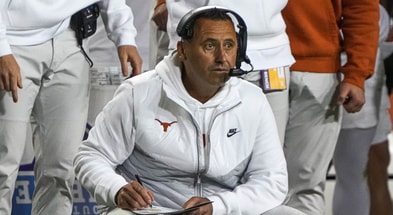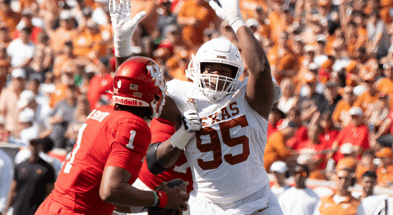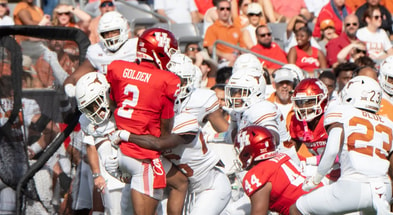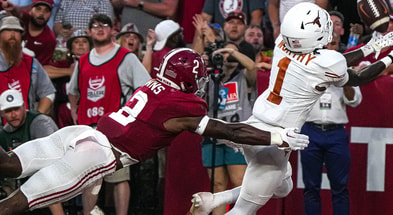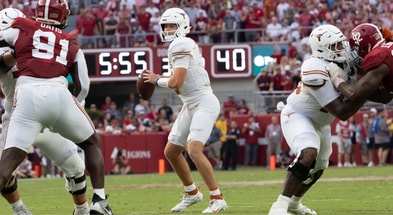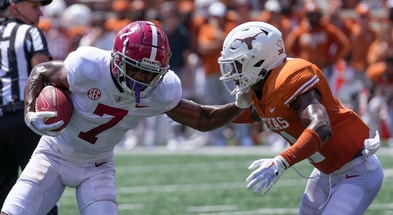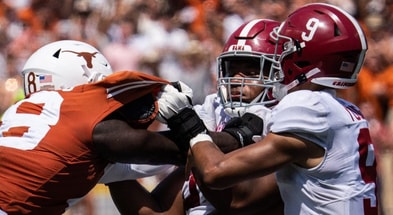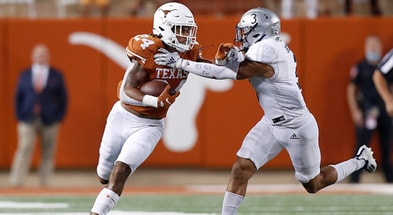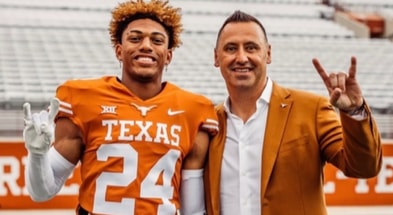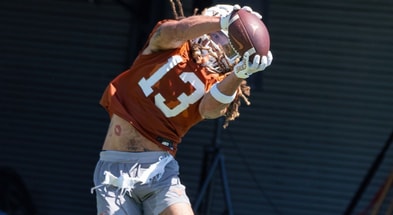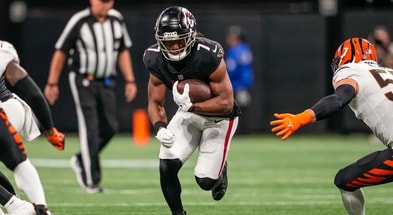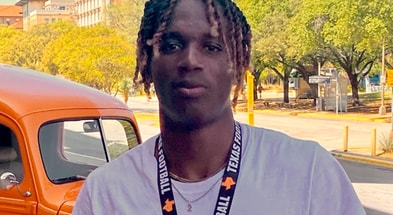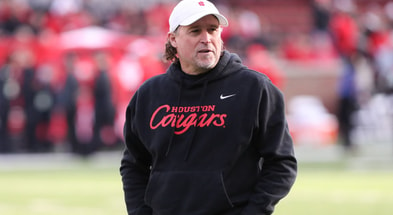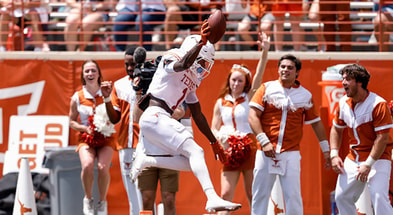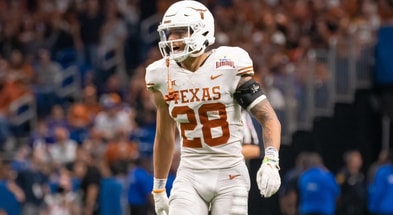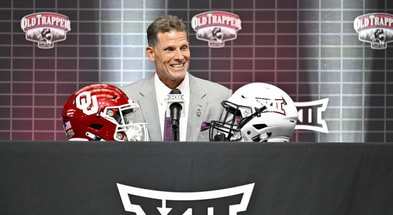Hoops preview: Lipscomb

Hoops Preview: Lipscomb
Date: Tuesday, December 16
Time: 7:00 Central
Television: LHN
Location: UT
Ever since Isaiah Taylor’s injury, people on the board have had questions and thoughts:
DC Horn: If you were running it, what would you do on offense without Taylor (or someone similar)? While we have a very, very strong defense, however a team with good players and having somewhat good shooting will beat us when our offense plays as it did last night … no matter how strong our defense is…
LonghornAF06: Any ideas why Ridley seems to be off to a slow start? Any way to move Felix to backup fullback?
BevoBoy: Its awful tough to score more than 59 points when you commit 18 turnovers. And Texas’ size advantage was incredibly obvious on the defensive end of the court. I was absolutely baffled with why that size advantage didn’t come in to play on the offensive end. Oh wait…just remembered why. The 18 turnovers.
And those are just a few, obviously.
So, because of those questions (and lots more like them), I’ve decided that for this game (Lipscomb) I’ll write a different type of preview focusing more on the Longhorns and what the issues at hand are for them, offensively.
If you came to this thread expecting a normal Hoops Preview, I apologize, and I’ll have a regular one for every game here on out, but hopefully this post can offer some insight on exactly why the team is have troubles beyond just saying that Isaiah Taylor is absent.
Why is the offense struggling?
It’s simultaneously simple and complicated.
The simple answer is that we aren’t generating space from our set looks.
The complicated answer is that we don’t have the personnel currently available to either a) properly execute a read and react system; or b) create high quality offensive looks through individual playmaking ability.
Both equal the same sum, but it’s all a question of what you’re looking for. As is, we can break the concerns down to both system and player issues.
The System
Barnes has essentially installed a combination offense that is generally equal parts random ball screen and read-and-react.
At its core, the random ball screen offense is predicated on each offensive player understanding that, depending on 1) their floor positioning; and 2) the actions of the player with the ball, they have certain choices they can make inside of their offensive responsibilities.
Does the ball screen work? If so, do they cut? If not, do they screen away? Are they the safety valve?
It requires a player to have an in depth understanding of where to go, when to go there and what his options are to either score or help in the execution of another player to.
The problem?
We have players with flaws in a read and react system. Ridley needs the ball in a very specific area to be successful as a scorer. Ibeh even more so. Holmes doesn’t have the ability to play make as a ball handler. Neither do Lammert or Turner. Holland isn’t a risk as a shooter so the hedge can play way low and keep him from turning the corner. Felix both lacks vision as a passer as lateral quickness as a penetrator. Yancy, Croaker and Barnett all seem a step behind in one area or another depending on the game (though all three are more inherently offensively gifted than either Holland or Felix).
Begging the question, “Is this the right system to run if Barnes is going to value defensive athletes over offensive play makers?”
The Players
Whether you’re talking about Bo Ryan’s Swing Offense…Bob Knight’s Motion Offense…Jerry Sloan’s Flex Offense…or whatever, the fundamental purpose of any offensive set is to force the defense to rotate in ways where the offense has ample time/space to find scoring opportunities.
Does that mean you impede the defense by screening? Yes.
Does that mean you misdirect the defense by forcing them to chase on sweeps or flashes away from the ball? Yes.
It can mean any number of things (open perimeter looks, open passing lanes to cutters, open passing angles for post entry, open spacing to the basket in penetration, etc.) as long as the defense has to rotate and shift as the offensive players run through their sets.
While this may sound like a systematic problem, it’s not. In fact, this is more about the players than just about any offensive flaw could be.
This also magnifies why the absence of Taylor has had such an impact.
More than anything else as a point guard, Taylor brings the ability to get the ball into defensive soft spots. Much the same as TJ Ford did a decade ago, Isaiah basically can create dribble penetration to any spot he wants to on the court.
If he wants to go there, he can go there.
As such, the help defense must always keep an eye on the open space in the half court because Taylor is never more than three dribbles from any place on the court he cares to be.
In essence, when Taylor is in the game, the interior help defender has to cover two things…his own assignment and the dribble penetration lane that Taylor might exploit. It’s what makes Taylor so effective as a lead guard and it’s especially what makes our big men so effective as offensive rebounders/second chance points opportunists.
Except he’s gone.
And (as we’ve been saying since last April) there’s no one else to fill in that void.
The reality is that interior help can rotate at the last minute and still have a better than 50/50 chance at shutting down a drive to the hoop by Felix (if he can turn the corner against a quality defender in the first place). The reality is that Holland still refuses to exploit any type of pull up/spot up game as a shooter so the defense can collapse and not pay for it. The reality is that Yancy isn’t getting enough minutes to prove what, if anything, he really can do as a play maker.
We simply don’t have the players available to make a defense rotate and shift. Not with any regularity, at least.
So Longhorn players are forced to a) throw the ball around the perimeter against teams that can pressure passing lanes without fear of Texas’ ball handlers getting lane touches in dribble penetration…resulting in turnovers; b) attempt to force dribble penetration against a sagging defense that has no need to rotate…resulting in turnovers; or c) look to create post entry against a sagging defense that has no need to rotate…resulting in poor entry angles and Texas’ big men receiving the ball outside of their comfort zone…resulting in turnovers.
History says that Taylor would be playing 35+ minutes per game at this point, so it’s difficult to be too upset with the staff for running this offense or instilling this game plan.
Doesn’t make the struggles any easier to deal with.
Okay, so what has to happen?
As simply as one can say it, the execution has to get better. Most notably, Texas’ ball handlers must get better at setting up the screen, Texas’ bigs must fight for better positioning on the low block and the entire Longhorns squad must value the basketball when passing against pressure.
All tough things to do against a defense that can simultaneously play passively against the ball screen and aggressively against the pass.
Top 10
- 1Breaking
Dylan Raiola injury
Nebraska QB will play vs. USC
- 2
Elko pokes at Kiffin
A&M coach jokes over kick times
- 3New
SEC changes course
Alcohol sales at SEC Championship Game
- 4
Bryce Underwood
Michigan prepared to offer No. 1 recruit $10.5M over 4 years
- 5Trending
Dan Lanning
Oregon coach getting NFL buzz
But until those things get better, it wouldn’t matter what offensive guru was running the program, these Texas players would struggle.
Then what?
Well, not much, really.
Then it’s simply a matter of being purposeful in deciding what is and what isn’t a good shot.
If you’re Wisconsin, you’re willing to run through 27 seconds of scripted play before getting in to a shot. If you’re ISU, your preference is 8 seconds. If you’re BYU, your preference is 5 seconds.
What is Texas’ preference?
It needs to be on a good shot whenever they can get it. It needs to be after solid player movement allowed Texas’ big men to get a lane touch whenever possible.
And, more importantly, it needs to come with the understanding that passing up an open look is as bad as a turnover. Because, unfortunately, it pretty much is for the Longhorns at this point.
The Endgame
Texas will beat Lipscomb. Likely with ease.
Still, chances are both teams will score less than they should (and both because of what Texas can/can’t do).
What Texas fans should be seeing is a Longhorn team which is cutting down on turnovers, maximizing offensive possessions whenever possible and playing with a focused freedom in their read and react offense.
If we see those things, it will be a blowout.
If we don’t, Lipscomb will keep the game far closer (and Texas fans will lose more and more hair as the UT players see wasted opportunities fill the stat sheet against another lesser foe) than it has any reason to.
One other quick note is that Barnes’ affection for how Croaker finished the game on Saturday is apparently real. So real, in fact, that one person I texted with yesterday suggested we might see Damarcus get a start in this game.
Not sure that’s going to happen, but it would be exciting to see what this offense is capable of doing with someone as dynamic as Croaker on the floor for an extended period of time.
Here’s hoping he gets the chance and hoping even further that he can make the most of it.
Prediction: Texas 69 – Lipscomb 41
Projected Starting Lineup
Yancy
Holland
Holmes
Lammert
Ridley
MORE GAME NOTES
• TELEVISION: The game will be televised nationally by Longhorn Network. Lowell Galindo (pxp), Reid Gettys (analyst) and Jane Slater (reporter) will call the action.
• RADIO: The Longhorn Sports Network and KVET (FM 98.1/1300AM Sportsradio the Zone) broadcast every UT game on the statewide network. Craig Way (pxp) and Eddie Oran (analyst) will call the action. Check www.TexasSports.com for a listing of affiliates carrying the game.
• SERIES: First meeting
Notables
• HISTORICALLY GOOD DEFENSE: Texas held Texas State to 27 points on 21.6% FG shooting in Saturday’s victory. The 27 points marked the fewest points that the Longhorns have allowed since Dec. 6, 1946 (53-23 home win against Houston YMCA). UT has limited its opponents to an average of 50.9 ppg on a combined 30.6% FG shooting this season.
• CLEANING THE GLASS: The Horns have outrebounded their opponents in eight of their first nine games and sport a +14.7 rebound margin (44.6-29.9) on the year. Texas posted a +24 (45-21) advantage on the glass in Saturday’s win against Texas State.
• RIDLEY PROVIDES SPARK: Junior center Cameron Ridley scored 13 of his team-high 14 points in the second half during Saturday’s win against Texas State. He converted 6-of-9 field goals and 2-of-3 free throws in 21 minutes.
HORNS AT HOME
• UT is currently in its 38th season of play at the Frank Erwin Center.
• Texas has won 13 consecutive home games dating back to last season entering Tuesday’s contest.
• The Longhorns have registered an all-time record of 455-104 (.814) in the building.
• Since Rick Barnes arrived in Austin, UT has recorded a 230-32 (.878) mark at the Erwin Center, including a 107-24 (.817) record in Big 12 Conference home games.
• Texas is 183-21 (.897) at the Erwin Center in the last 13 seasons (dating to the start of the 2002-03 season)




